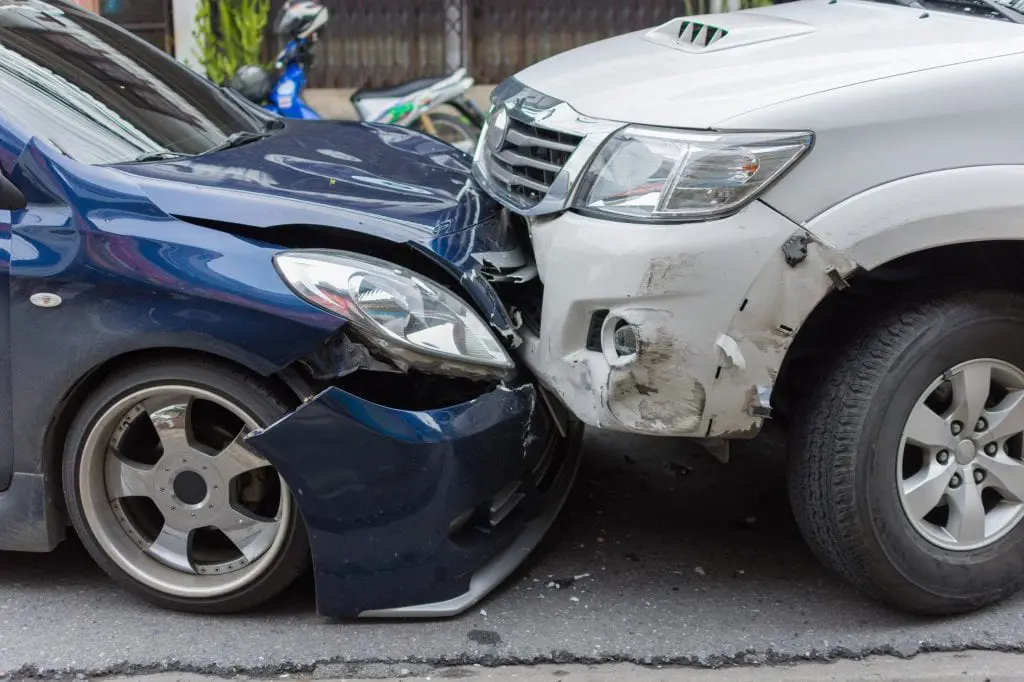Car accidents can turn a day of running errands into having to rebuild how you function for the rest of your life. Many car accident injuries are long-lasting and take treatment along with physical therapy to get over.
If you’re lucky, the road to feeling better won’t be a long one. If you’re luckier, you won’t get injured at all! It’s good to know what can happen if you do, either way.
Send this article to your kids or family members as a reminder of how important it is to drive safely. When they learn about these car accident injuries maybe they’ll slow down and save their own lives.
Start reading below.
The Most Common Car Accident Injuries
If you’re lucky, you’ll never be in a bad car wreck in your life. A fender bender can give you whiplash at best, even if it’s at low speeds.
Most injuries from moving car accidents are much worse than a case of whiplash, we’re talking spinal or brain damage. Broken ribs collapsed lungs, bone breaks and internal bleeding are all common.
Learn the specifics of common car accident injuries below.
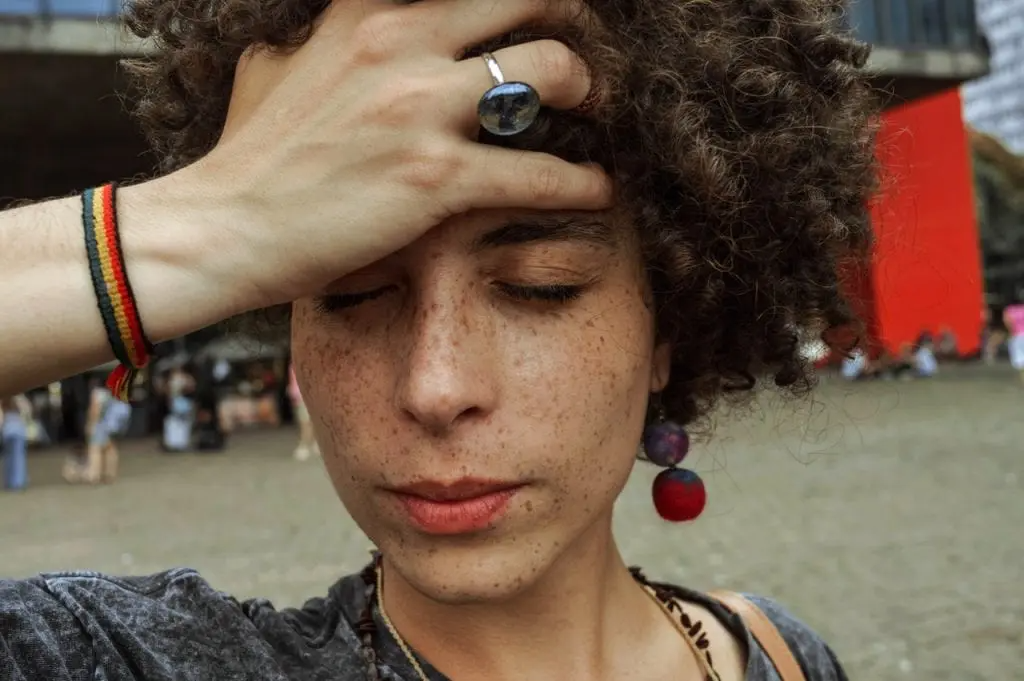
Car Accident Injuries – Head
The reason your airbags deploy from the side and the front is mostly to protect your head. When you get in a car accident, the impact forces your brain to slam into the skull, then rebound into the back.
This skull slamming doesn’t do good things for the soft tissue that makes up your brain. Even if you feel fine after a car accident, any quick forward or backward motion puts your brain at risk.
Traumatic brain injuries or (TBI) are some of the most common car accident injuries, after whiplash. They can do lasting damage and change the course of your day to day life.
Here are some examples of common TBI:
Concussion
A concussion is the simplest brain injury and occurs when the brain rebounds off the skull. This can be from a blow to the head or a sudden motion like jerking forward in a car crash.
Contusion
A contusion is like a centralized concussion, in fact, it’s normal to get both. The contusion itself is a bruise on the brain tissue.
Blood swells under the brain surface, which is dangerous pressure-wise. Sometimes big contusions need surgery or shunts to relieve the pressure.
Diffuse Axonal
This is when the brain structure tears from an intense shaking or rotation. If you’re T-boned and your head whips to the side, that’s an intense rotation.
Coup-Contrecoup
This is when the impact or blow to the skull is so intense that the brain rebounds off the front and back of the skull. It can bounce more than twice, like those silver impact desk balls.
Penetration
In bad car crashes, shrapnel or pieces of the car can fly and penetrate the skin. In this case, they penetrate the skin and your skull.
If this happens, you don’t have good chances of regaining full brain function. Many brain penetration injuries are fatal.
Head Injury Symptoms
The symptoms of the different types of head injuries are similar, no matter the diagnoses.
Head trauma symptoms are body-wide, which makes sense when you think about how much the brain controls. For clarification, we’ve broken common symptoms down into three parts.
Physical TBI Symptoms
- Loss of consciousness
- Headache
- Drowsiness
- Problems speaking
- Dizziness
Sensory Symptoms
- Blurred vision
- Issues hearing
- Bad taste in mouth
- Sensitivity to light
- Sensitivity to sound
Mental TBI Symptoms
- Memory problems
- Trouble concentrating
- Mood changes
- Depression
- Anxiety
There are more symptoms in each category and they differ with the intensity of the injury. Always go to the doctor after a car accident, even if you don’t notice anything up front!
Symptoms can appear immediately or days after the accident.
Traumatic Brain Injury Treatment
There’s not a ton you can do for a TBI, other than rest. Sometimes in a bad injury, Doctors will induce comas to reduce brain functioning.
This temporary brain sleep helps the brain heal since it’s not working hard doing its normal processes.
Otherwise keeping a low activity level helps keep blood pressure in the brain low.
If balance or motor skills got damaged with the brain injury, doctors recommend physical therapy.
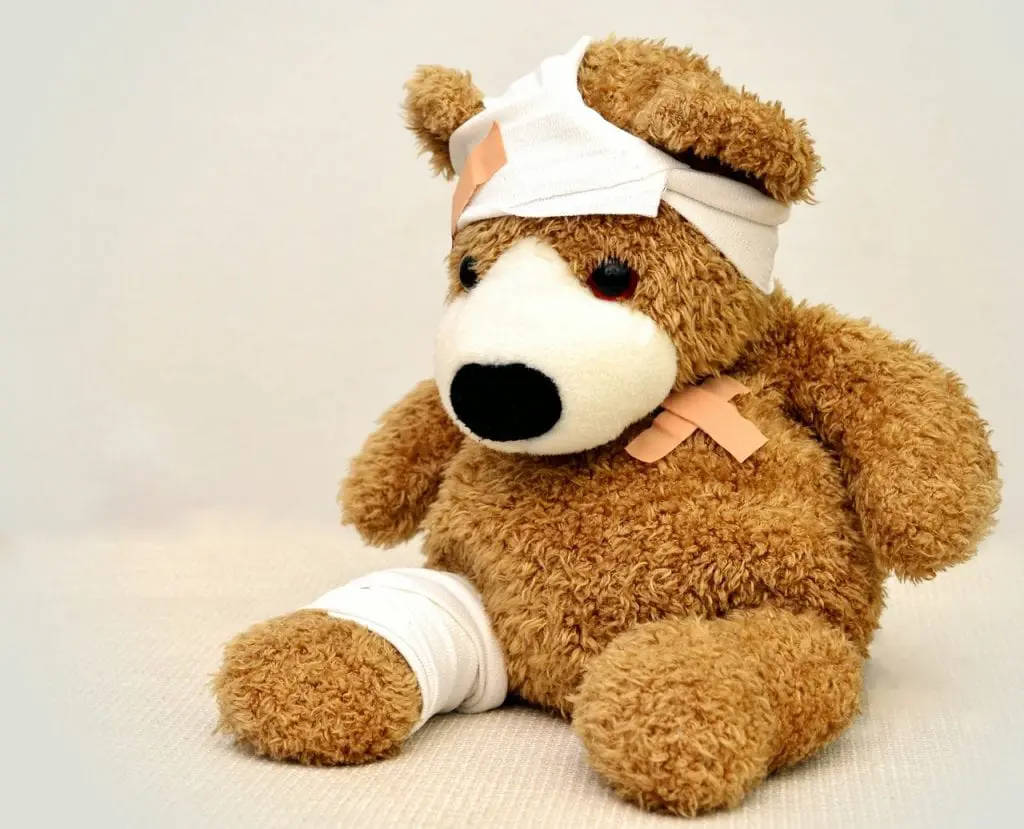
Car Accident Injuries – Neck
We started this list from the head down, but if we’d started by relevance neck injuries would have been first. The most common car accident injury is whiplash, by far.
Other injuries include:
- Neck fracture
- Herniated disk
- Cervical dislocation
- Spinal cord injury
- Neck Sprain
- Muscle strain
- Unnamed neck pain
- Inflammation
Whiplash
Whiplash is what happens when your neck jerks forwards (or backward) on impact. The weight of your head unexpectedly yanking muscles causes them to strain or tear.
Whiplash injury symptoms include
- Neck pain
- Tightness
- Knotted feeling muscles
- Trouble moving head side to side
- Inability to nod
- Tenderness
- Headaches from the base of the skull
You’ve seen people in television shows or maybe in real life wearing foam neck braces. This is an old method. Current medical thinking is anti-neck brace.
Resting the muscles is good, but by putting them in a brace they’re likely to atrophy (weaken).
Some proof of this? About fifty percent of neck injury suffers still have pain a year after their injury. To counteract that, Doctors are working on strengthening as well as resting post-injury.
Once the initial rest period is over, you should be strengthening neck muscles as a treatment method.
Physical Therapy for Car Accident Injury – Whiplash
There’s a lot more a therapist can do for whiplash than they can do for traumatic brain injuries since the neck is a muscle.
The brain’s a muscle too, but not one we have physical control over, exercise wise.
Stretching is a big part of whiplash treatment, as muscles get tense after trauma. A therapist will give a whiplash patient stretches based on their injury location.
Along with stretches, patients can expect to get strengthening exercises to do at home.
Example
One such exercise is called the four-point kneel. You get on your hands and knees, with knees under hips and hands under shoulders.
Pull the belly button in and engage a neutral spine. Keep your head in line with your spine looking at the floor.
Tuck your chin in as you look downwards and behind you. Your goal should be to see your knees. Then, slowly raise your head back up and start again.
The exercises physical therapists choose are the opposite of the force that caused the injury, most of the time.
In this example, the person’s neck snapped forward, so they’re strengthening the back of the neck.
Collar Bone Fractures & Car Accident Injuries
Since the collarbone is part of the neck and shoulder structure, it’s considered a neck injury. There’s almost nothing you can do to treat a broken collarbone.
The current recovery program is lots of rest and a sling to keep the closest arm still. After it’s healed, exercises for the biceps and triceps can bring strength back into the area.
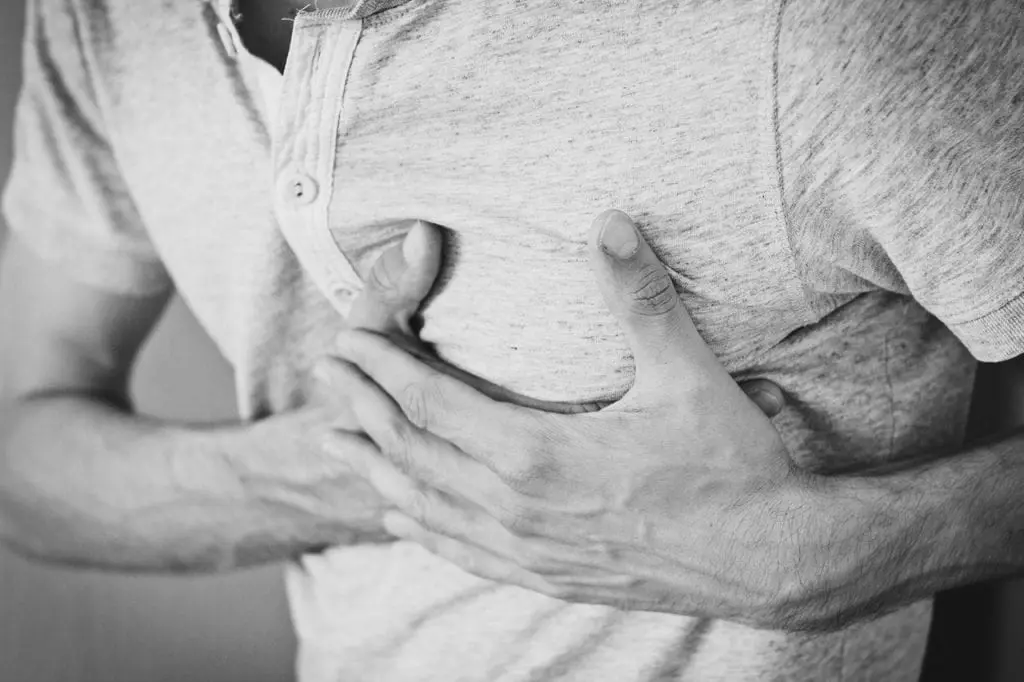
Car Accident Injuries – Chest
Your chest cavity holds a lot of organs that are essential for bodily function. Your heart, your lungs, and your stomach are all above your waist.
When you injure your chest structure, like the ribs or solar plexus, you can damage the organs they protect.
If you’re lucky, you’ll come out of a car accident with a fractured or bruised rib. That’s the mildest form of a chest injury.
Here’s a list of common chest injury types:
- Bruised ribs
- Broken ribs
- Punctured Lung
- Collapsed lung
- Internal bleeding
- Muscle strain
- Organ damage
Bruised or Broken Ribs
Rib injuries are excruciatingly painful. Why? Because the lungs press against the ribs when we breathe.
People with lung injuries usually take shallow breaths, to prevent this whether consciously or not.
Rib Injury Treatment
The treatment for broken or bruised ribs isn’t much more than rest. Along with rest, Doctors or physical therapists will show patients how to breathe without separating the injured ribs.
If people take breaths that extend their lungs against the injured rib, the bone never heals. Every time the bone goes together, your breath pushes it apart.
This isn’t as easy as it sounds. Bodies breathe one way for their entire lives. Changing that breath pattern all of a sudden takes a lot of concentration.
Punctured Lungs
With a bad blunt trauma, a broken rib can pierce the lungs. This makes breathing difficult and reduces the lung capacity.
Lung punctures also come from direct trauma like gunshots or knife wounds.
At the scene of the crash, they’ll give people with suspected lung injuries an oxygen mask. Getting supplementary oxygen helps the patient communicate what’s going on.
Treatment
The treatment method depends on the puncture site. A small puncture wound may heal on its own, but that’s up to your doctor.
Don’t assume you can rest through a collapsed or punctured lung. If you’re having trouble breathing your doctor needs to know.
For bigger wound sides, doctors may do surgery to close the lung puncture. This is a semi-serious procedure and patients go under anesthesia.
Collapsed Lung
A collapsed lung happens the same way a punctured lung does, but it’s a more serious injury. Instead of making breathing harder because of a small rupture, a collapsed lung is the whole lobe.
Someone with a collapsed lung has half the breathing capacity and ability they’re used to. It’s painful and frightening, usually accompanied by other injuries (like broken ribs).
Treatment
The treatment for collapsed lungs is to get to the source. What made the lung collapse? Was it a large puncture? Blunt trauma and pressure from ribs or other organs?
Doctors find the source and do surgery to fix it from there.
There isn’t much physical therapy for a collapsed lung, other than supplemental oxygen and breathing exercises.
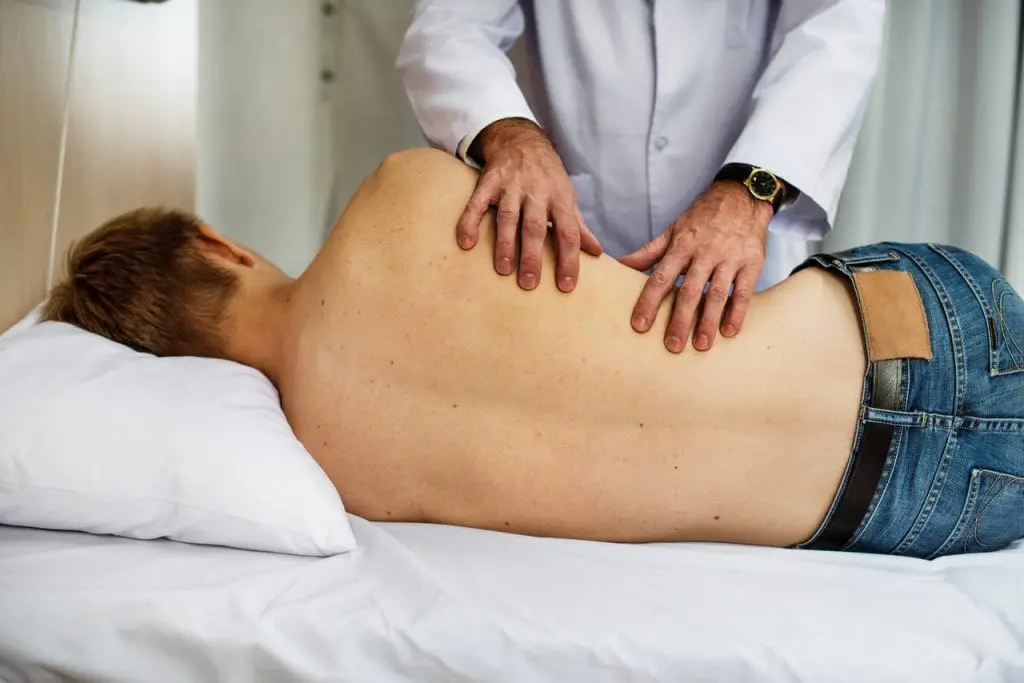
Car Accident Injuries – Back
The spine is another often-injured body part in car accidents. The nerves in your spinal cord control a whole array of body functions.
Back injuries can cause nerve damage, paraplegia, and more minor losses of mobility.
Common back injuries from car accidents are
- Strains
- Herniated spinal disks
- Dislocated spinal disks
- Spinal disk breaks
- Nerve damage
- Spinal twists
- Disk rotation
The spine is a bunch of small disks and vertebrae working together. All those small parts lend themselves easily to injury.
Back Strains
A back strain is the mildest form of back injury, but that doesn’t mean the pain is mild. Your back is essential for all muscle group movements.
A strained back muscle or group of muscles can really hurt your daily productivity.
Treatment
For a muscle strain, doctors will prescribe rest and some type of muscle relaxant. The muscle relaxant causes your body to release tension on the strained area which decreases pain.
Ice and heating packs can help while the strain heals. Otherwise, you have to rest and wait for the pain to go away.
Herniated Disks
When spinal disks are herniated, the soft center of the disk pushed outwards. The natural crack in the exterior of the disk stretches open.
Sometimes people don’t experience pain from a herniated disk ever, or not until much later.
Since the spine is so connected to the nervous system, pain can radiate and show up in other places. You may have a herniated disk but feel the pain in your leg.
That’s one reason seeing a doctor and telling them all your symptoms is so important after a car accident. The cause of your symptoms may be completely different than what you’d think.
Treatment
The treatment of a herniated disk isn’t unlike the treatment for back sprains. There’s muscle relaxants, narcotics, and over the counter pain meds.
Rest and pain control is the number one priority. After the worst is over, a doctor will recommend physical therapy for alignment and further treatment.
The other types of back injuries are similar in their treatments and their causes. Physical therapy and rest are a must for anyone with accident-related back pain.

Making Things Right After A Car Accident Injury
If your doctor doesn’t recommend physical therapy and you feel like you’re still having symptoms, ask them why.
They may not have thought about it or aren’t in the habit of treating people with your injury via physical therapy. Unless you’re overdoing it, strengthening weakened muscles is never a bad thing!
The best physical therapists will work with you and your medical care team so you have a holistic experience.
Our PT clinics will work with your doctors, and we’ll find treatment methods to get you feeling better. Our laser treatment machine is popular with our car accident injuries clients right now.
Schedule an appointment with us online today!
.png)


